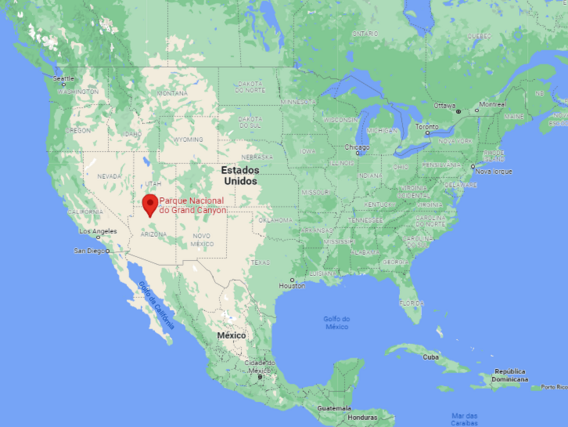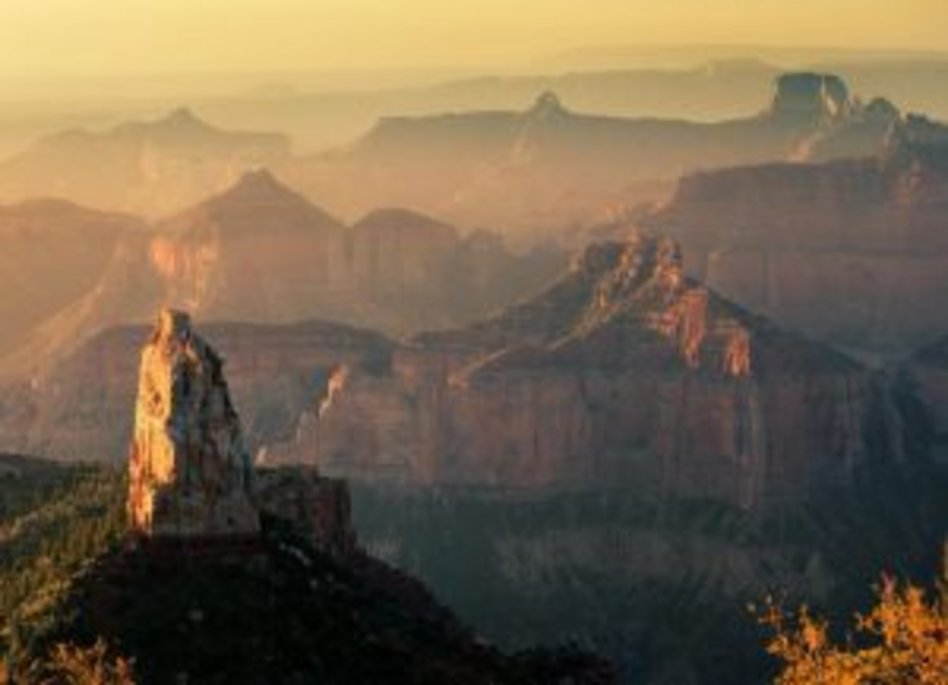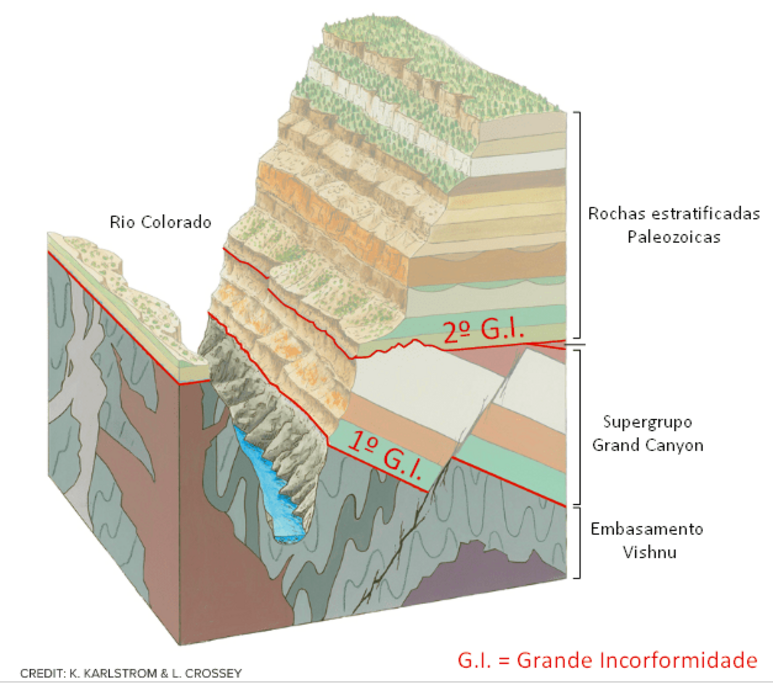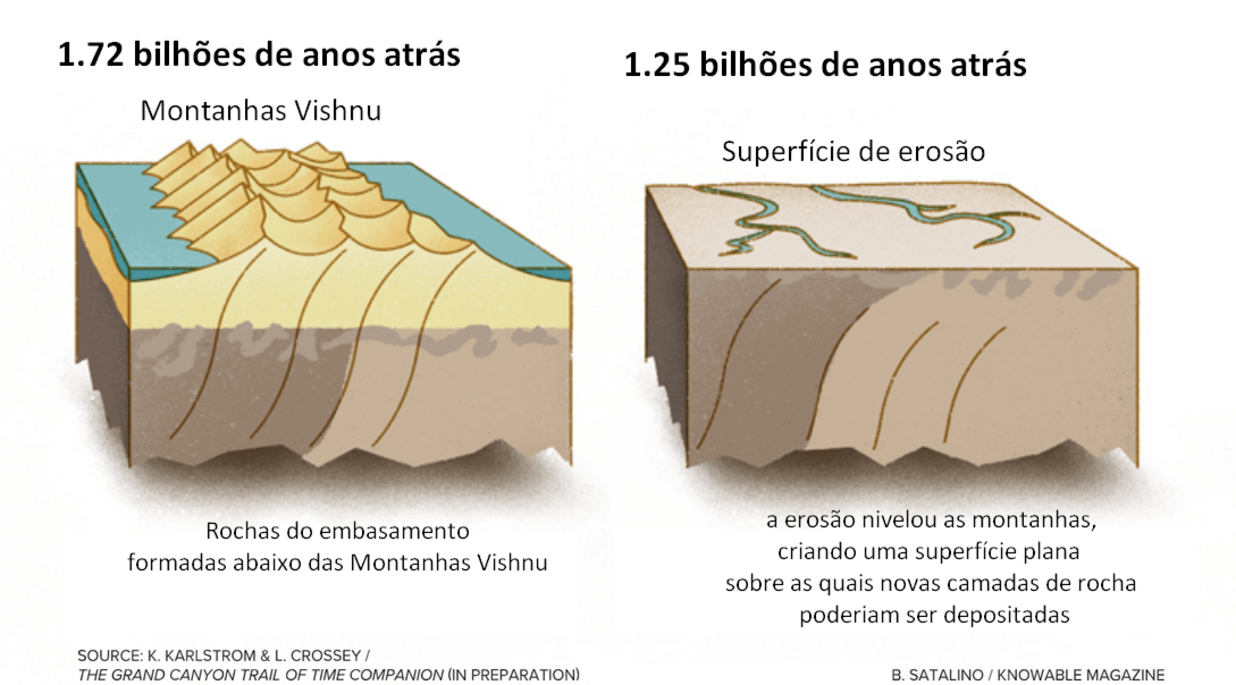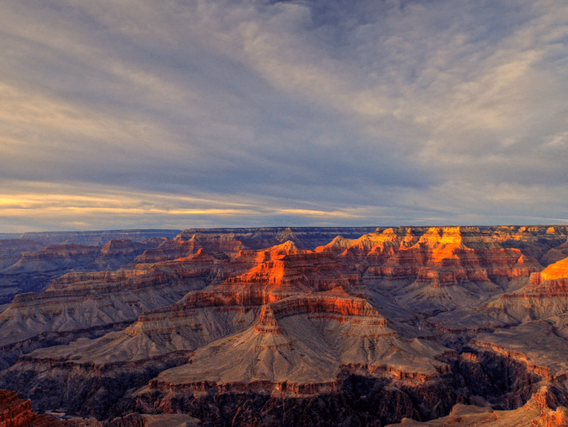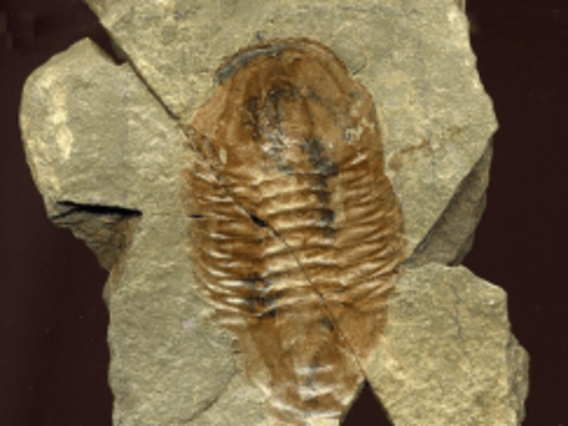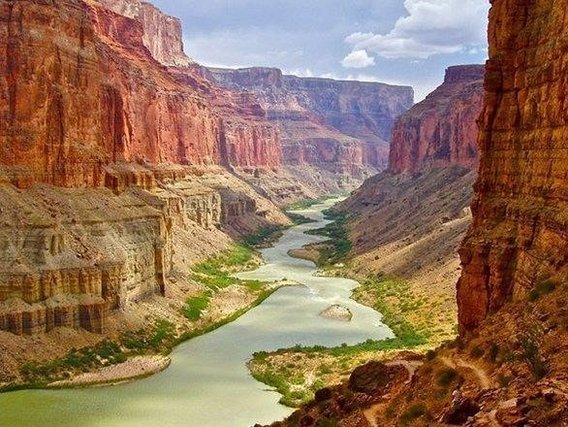
The Grand Canyon is an extensive plateau and river valley region characterised by steep, deep canyons carved out over millions of years by the Colorado River, in the north of the state of Arizona, southwestern United States. It consists predominantly of sedimentary rocks in horizontal layers. Considered a "geological library", the Grand Canyon is one of the most studied landscapes in the world and one of the places with the best examples of erosion of arid terrain and observation of stratified layers.
